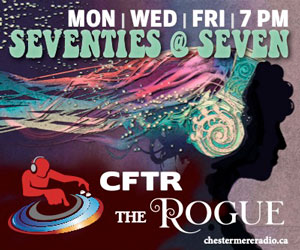Butterflies are easily attracted to your garden as long as you know a few basic things about them, and how to make your garden a hospitable place for them! The first thing you need to know about butterflies is that they prefer things a bit messy. That’s why butterflies are found in abundance in the fields, woods, and ditches but shy away from neatly manicured and very formal gardens.
Like all living things, butterflies need food, shelter, and a safe place to raise a family. As far as food is concerned, adult butterflies feed on nectar, fruit juices, and a variety of minerals. Larval butterflies are caterpillars, and caterpillars eat plants! These creatures are extremely sensitive to pesticides of all kinds, so be prepared to lose a few plants to offspring. (Many species of butterflies are host specific, and will only lay their eggs on certain kinds of plants.)
Butterflies require the sun to warm them up before they can fly, so providing some large rocks and a sheltered place where they can sun themselves is very helpful. Some ornamental grasses provide a place for them to shelter at night.
Creating a permanent “mud puddle” in your garden would definitely be appreciated by butterflies! They obtain minerals by sucking mud in wet locations. Providing some slightly rancid fruit in the same area will also help attract them!
The chief food of adult butterflies is nectar, and they obtain this from flowers. Butterflies favor fragrant, tiny flowers that are held in clusters. They also prefer clumps of nectar rich flowers as opposed to one here or there. (If gardening for butterflies, try to plant in groups of three or five for best results.) Some butterflies are migratory and some hibernate. It’s important to provide flowers for them over a long season and not have everything bloom all at once. The following plants all provide a welcome source of nectar for butterflies as well as making your yard a more beautiful place!
Asclepias- Also known as milkweed, there are many different species and some prefer drier environments, some moist. In addition to being beautiful and providing nectar, these are also the host plants for the famous migratory monarch butterflies.
Echinacea- Also called purple coneflower. The daisy-like blooms can be white, pink, or mauve and are adored by butterflies and gardeners alike!
Goldenrod- Provides a brilliant splash of gold in the late summer garden and much loved by butterflies as they prepare for winter.
Sedum- Some sedums are upright, some are groundcovers but all produces succulent, fleshy leaves and flat clusters of star-shaped, nectar rich booms.
Buddleia- Appropriately called butterfly bush, these plants are shrubs in milder climates but are best treated as perennials here. Available in white, red, blue, mauve, purple, pink, and yellow the blooms are fragrant and quite beautiful.
Lilacs-One of the first butterfly flowers to bloom in spring, there are some good dwarf versions if you don’t have space for a full sized one.
Heliotrope- A great annual for containers and beds with deep purple, richly scented blossoms all summer.
Rudbeckia- Popularly known as brown eyed Susans, these bright yellow daisy-like flowers begin to bloom in mid to late summer and are highly attractive to butterflies!
Yarrow- A fast growing and hardy perennial that blooms all summer! The flowers are produced in great profusion and may be white, red, orange, yellow, gold, pink, or purple and attract many kinds of butterflies.
Aster- There are both fall blooming perennial asters and brightly colored annual ones that bloom all summer. Butterflies enjoy both!
Zinnia- Another brightly colored summer annual and easily raised from seed, zinnias bloom exuberantly all summer long and attract many butterflies!
Lantana- A tropical plant often grown as an annual, lantanas should be grown in hot, sunny areas and will produce small clusters of brightly colored blooms all summer.
Joe Pye Weed- A misleading name as this plant is not weedy at all! Growing to a height of 6 ft., this beautiful plant prefers a moist area and produces huge clusters of violet or soft purple flowers, with a rich fragrance.
Phlox-It is the tall, late summer flowering varieties of phlox that butterflies favor as these are the most fragrant and produce the most nectar.
Pinks- Also known as dianthus, butterflies like both the annual and perennial form of these flowers as long as they are single- double flowered varieties, while beautiful, provide very little nectar.
How to Attract Butterflies to your Garden
In response to Canada's Online News Act and Meta (Facebook and Instagram) removing access to Canada's local news from their platforms, Anchor Media Inc encourages you to get your news directly from your trusted source by bookmarking this site and downloading the Rogue Radio App. Send your news tips, story ideas, pictures, and videos to info@anchormedia.ca.




